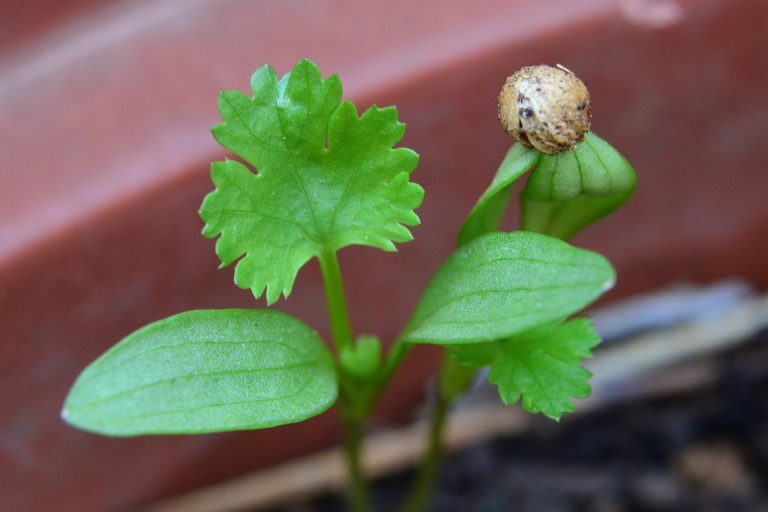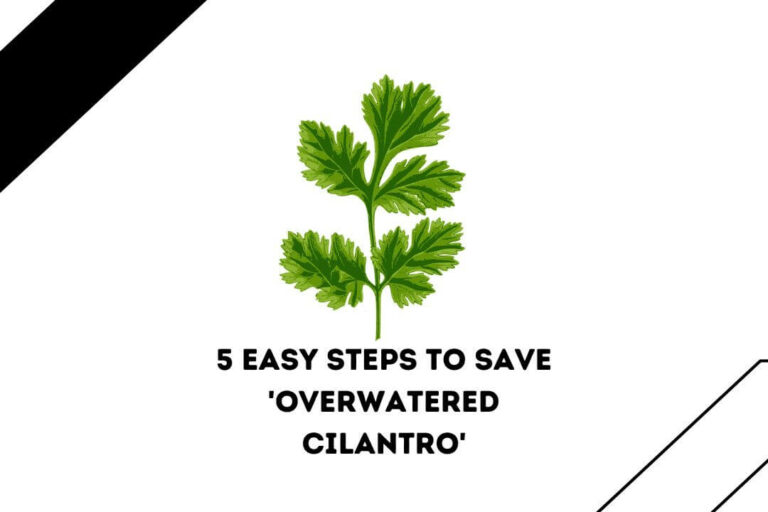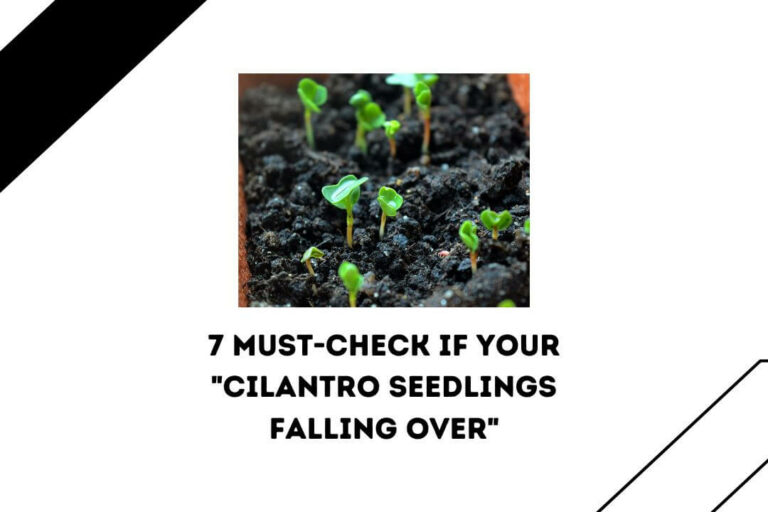When cilantro keeps dying, we often get frustrated? No matter what you do, if your Cilantro Can’t survive for more than a few weeks, this is the article for you. You are not alone, and Cilantro has been known as a notoriously tricky herb to grow and keep alive, even for experienced gardeners. In this article, we’ll explore some of the most common reasons “Why My Cilantro Keep Dying” as well as some tips & tricks for keeping them healthy and thriving. So if you want to stop the cycle of your Cilantro’s Continuous death, read this article thoroughly.
Does Cilantro Die After Flowering?
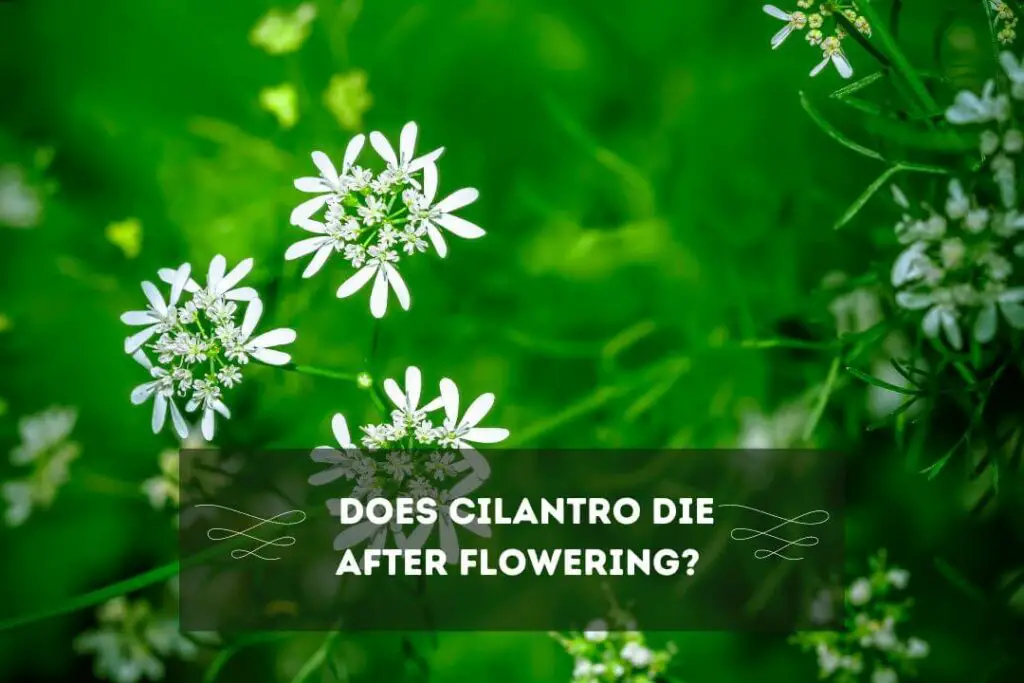
After your cilantro flowers and produces seeds, it will eventually die, completing its life cycle. However, it is possible to extend the life of your Cilantro. Thus, you must pay attention to regular harvesting or planting new seeds throughout the growing season. If you notice Cilantro Seedlings Falling Over, you might not be spacing them correctly.
You should know that Cilantro is an annual herb that goes through a natural bolting process.
This is when your Cilantro will send up a tall stem with flowers. If you notice your cilantro Bolting, it is a clear sign that your plant is shifting its energy from producing leaves to producing seeds.
When your Cilantro starts to bolt, You will notice its leave becoming bitter and losing their flavor. According to The Oregon State Of University, “Cilantro is known to have a relatively short life cycle, which is hastened when it goes to seed, especially in summer.”
This is why expert recommends harvesting the leaves on time before your plant start to die off. If you missed the right time to harvest the leaves, your Cilantro might begin to die off.
Cilantro is a cool-season herb that thrives between 50 and 85 degrees Fahrenheit; you should keep them in proper sunlight and shade. If you live in a region where temperatures rise above 85 degrees Fahrenheit, your Cilantro may become stressed and start to bolt prematurely.
You should know that hot temperatures and lack of moisture can stress your Cilantro excessively, which is already not a good sign because it will cause it to bolt more quickly.” therefore, If your Cilantro is exposed to high temperatures or drought conditions, you will notice your plant dying off after flowering.
Hence, if you are looking for ways to prevent your cilantro plant from dying after flowering, there are a few steps you can take.
- Firstly, you can prevent premature bolting by planting Cilantro in a more remarkable part of the garden or providing shade during the hottest day.
- Secondly, you can also prolong the life of your cilantro plant by regularly harvesting Its leave. This will ultimately help your plant focus on producing new growth.
- Lastly, you can also try planting slow-bolting varieties of Cilantro like ‘Calypso’ or ‘Caribe,’ which are less likely to bolt early.
Note: You should consider pruning your Cilantro. You should know that just by snipping off the leaves regularly, you encourage your Cilantro to keep growing new foliage instead of focusing on producing seeds.
How To Tell If Cilantro Is Dying?
For beginners or people who are just starting, it can be hard to tell if your Cilantro is dying or just going through a rough patch, but there are a few signs you can look for.
Leaves turning yellow or brown
Firstly, check the leaves of your cilantro plant. If You notice your plant leaves turning yellow or brown, it can also be a sign of overwatering, underwatering, or a pest infestation.
- Overwatering cilantro plants can result in root rot, which also quickly kills your plant.
- Similarly, Underwatering can cause your cilantro leaves to dry out and turn brown.
- On the other hand, pest infestation like spider mites or aphids can also cause the leaves to turn yellow or brown.
Sometimes, cilantro turning yellow tends to be a sign of other problems as well. Thus, look at this article, where we’ve discussed 7 possible reasons for this happening. Similarly, If you notice any red spots on the cilantro plant or your plant cilantro turns red, other factors can be at play. So check out this guide to learn seven possible reasons and treatment options to save your plant and get it back to its normal coloration. Red leaves are not suitable for eating because they lack nutrients.
‘soft & mushy’ or ‘dry & brittle’ stem
Secondly, you need to check the stems of your cilantro plant. If You think your cilantro plant’s steam is soft and mushy, it’s a sign of root rot, often caused by overwatering. On the other hand, if You notice the stems of your cilantro plants are dry and brittle, it can be a sign of underwatering or exposure to hot & dry air.
The Cilantro plant looks wilted and limp.
Lastly, you need to check the overall appearance of your cilantro plant. If You find it looking wilted and limp, it is either a sign of underwatering or exposure to high temperatures. If This is Accompanied by leave loss, it can be a sign of nutrient deficiency or pest infestation.
9 Reasons Why Does My Cilantro Keep Dying
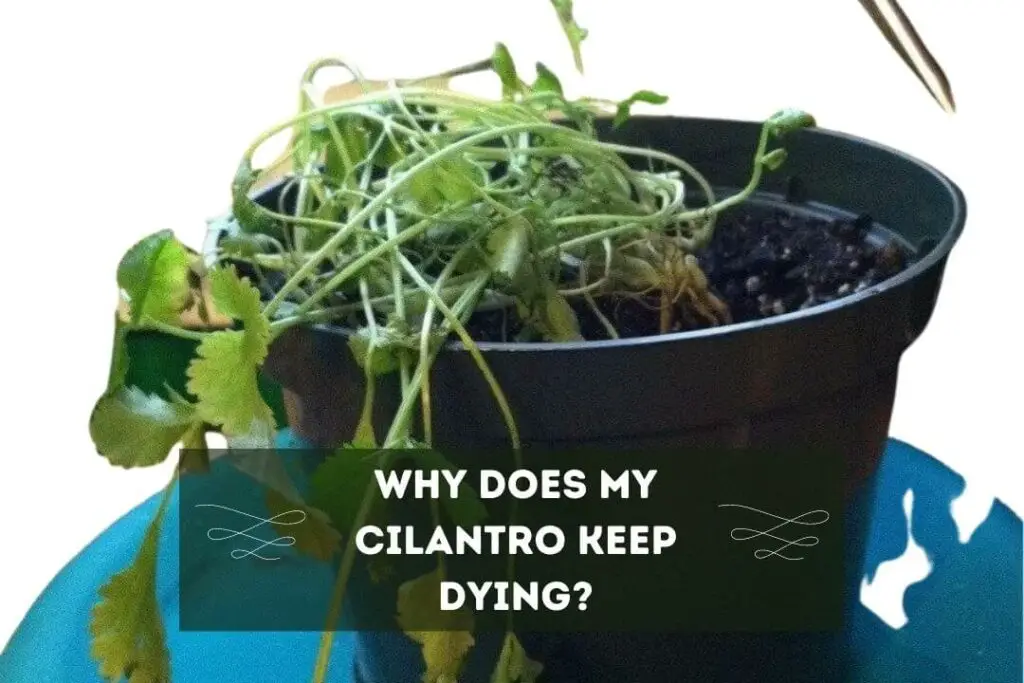
Nutrient Deficiency
Do you know Cilantro needs a balanced diet of nutrients to grow and thrive? Therefore I recommend you fertilize your plant with a balanced fertilizer every two weeks. Using a balanced fertilizer containing phosphorus, potassium, and nitrogen in the same proportion as 10-10-10 fertilized is recommended. You can use either a liquid or granular fertilizer, but follow the packaging instructions carefully and do not over-fertilize.
Crowded Roots
This problem has been commonly seen with big nurses or people just starting with growing Cilantro in a pot. Therefore, If your cilantro plant is in a pool, report it every year to prevent overcrowding of roots. If you ignore this, your plant will likely suffer from root rot which will eventually cause them to die.
Overwatering
As I told you earlier, overwatering can cause root rot in cilantro plants, which can quickly kill them. Therefore, it is essential only to Water Your plant when the top inch of its soil feels dry. It would be best never to water your cilantro leaves or stem directly. A few of the common signs of overwatering include:
- Yellowing Leaves
- Wilting
- Root Rot
Poor Drainage
Do you know waterlogging and root rot are also signs of poor drainage? As I told you earlier, If your cilantro plant is in a pot, ensure it has proper drainage holes. If the soil is constantly waterlogged, it will lead to root rot and the death of your plant.
Lack of Sunlight
I hope you already know that Cilantro needs at least six hours of sunlight daily to thrive. Hence, If you don’t provide the proper sun to your cilantro plants daily, they may become leggy, and their leaves may turn pale. A few of the most common signs of improper light include:
- Leggy Growth
- Pale Leaves
- Stunted Growth
Underwatering
Similarly, Water, ing will cause your cylindrical plant to wind and its leaves to dry out eventually. I highly recommend you water your plant regularly and ensure the soil is moist but not soggy. It needs healthy training soil, and if you have planted it in a pot, make sure to make a hole for proper drainage. A few of the common signs of underwatering include:
- Wilting
- Dry Leaves
- Stunted Growth
Too much heat
As I told you earlier, Cilantro prefers cooler temperatures. If you don’t provide them with maximum temperature, you will notice your Cilantro wilting and dying in high heat. I highly advise keeping your Cilantro in a calm and shaded area, especially during the hottest parts of the day.
Pests
Cilantro plants are also prone to pest infestation if incorrectly, like any other plant. Many common Pests, like spider mites and aphids, can quickly infest and kill your cilantro plant. If so, I recommend using natural pest control methods or insecticidal soap to keep your plant safe. Below are a few common signs of pest infestation in cilantro plants.
- Holes In Leaves
- Webbing
- Wilting
Disease
Like pest infestation, your Cilantro can be susceptible to diseases like fungal leaf spots and bacterial leaf blight. This is why I highly advise keeping cilantro plants in a well-ventilated area while avoiding getting Water on their leaves to prevent the spread of disease.
How To Save A Dying Cilantro Plant?
- Firstly, you need to Identify the Problem By expecting the plant properly. Make sure to scrutinize your cilantro plant to determine the actual cause of the problem. Check for any pests or insects on the plant and any signs of disease or wilting.
- As I told you earlier, cilantro plants need moderate watering. Overwatering can lead to root rot, whereas underwatering can cause the plant to wilt. Therefore you should only Water Your Cilantro when the top inch of soil feels dry. Ensure you regularly water the plant and check the soil’s moisture level.
- You need to improve the soil quality thereafter because Poor soil quality can also lead to a dying cilantro plant, you can add; your compost or sand to the soil as required. But before that, you need to get it tested in a lab to determine what nutrients it lacks. Make sure not to overfertilize your cilantro plant.
- Ensure your plan gets the proper sunlight because Cilantro plants need at least 6 hours daily. If your Cilantro is not getting enough sunlight, I highly recommend moving it to a brighter spot or using artificial lighting to supplement natural light.
- Lastly, it would be best to trim away any dead or damaged leaves while adding essential balanced fertilizer to the soil that can provide critical nutrients to the cilantro plant. After that, be patient and continue to monitor because reviving a dying cylinder plant will take some time. You should be seeing some improvement within a few days.
Related Cilantro Plant Topics
| ITreating Tiny Bugs On Cilantro Plant |
| How Many Cilantro Plants Per Square Foot? |
| WHAT DOES CILANTRO LOOK LIKE WHEN IT SPROUTS? |
FAQ
Why Does My Cilantro Always Die?
As Cilantro plants are also relatively short-lived, they naturally die after a few months. If your Cilantro always dies immature, there could be several reasons behind it. Common causes include overwatering or underwatering, poor soil quality, lack of sunlight, pests or diseases, or not pruning the plant regularly.
However, if you are struggling with Cilantro keeps dying, I will advise you to check the article where we have shared 9 reason for this unfortunate event and what you can do to prevent this from recurring.
Conclusion
In this article, I have given my best to give you all the information you need to know on the question” why does my Cilantro keep dying” and “how to save a dying cilantro plant: Even though growing Cilantro can be a rewarding experience, You will have to provide consistent care &attention to keep the plant healthy and thriving. Did you know that growing cilantro in an aero garden helps better in preventing pest infestation and nutrient deficiency? Plus it also tastes better. If you want to learn how to grow cilantro in aerogarden, check this article out.
With the proper watering, soil, lighting, pruning, and fertilizing techniques, you can revive a dying cilantro plant and enjoy fresh; flavorful Cilantro leaves in your dishes for an extended period.
If you find this article helpful, then consider sharing it. Your share will help me learn about the right approach to save their time on the cilantro plant and why their plant keeps dying. Always remember to be patient and consistent with your care. Do check our other helpful articles on cilantro plant care and management. See you in the next post. Till then, Take care and goodbye.



